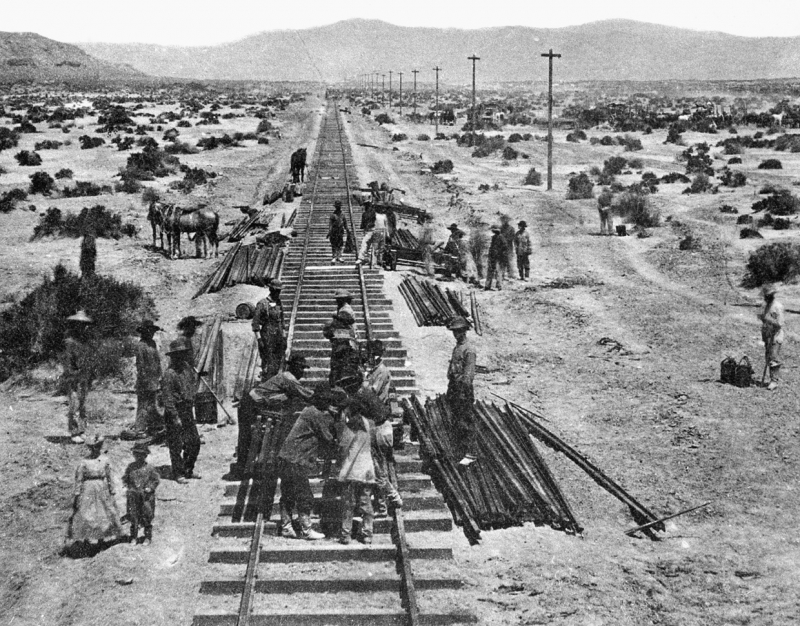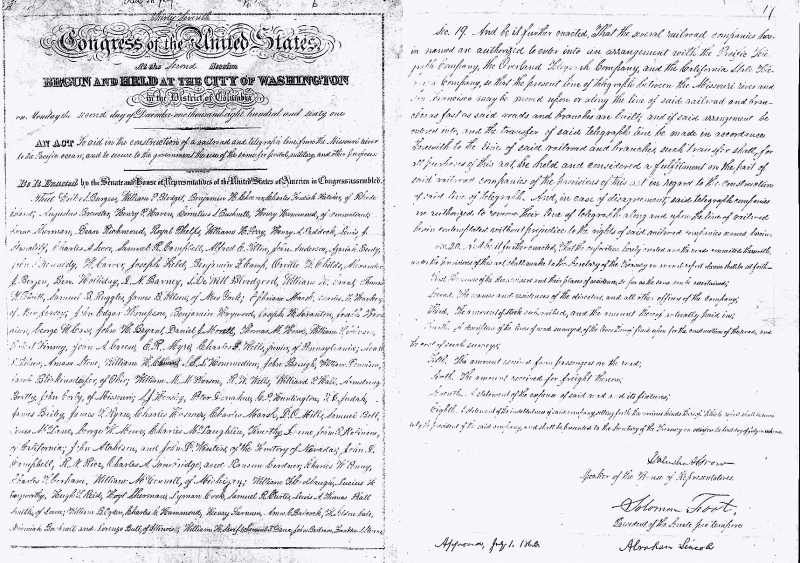The Pacific Railway Acts of 1862 and 1864
Abraham Lincoln ratified the Pacific Railway Act of 1862 on July 1st. The Act gave two rival railroad companies, the Union Pacific and the Central Pacific, rights of way and gave them the go-ahead to build a railroad that connected Sacramento, California, and Omaha, Nebraska. Starting in Omaha, the Union Pacific laid track in a westward direction. Beginning in Sacramento and moving eastward, the Central Pacific quickly ran against the demoralizing Sierras.
According to the terms of the 1862 Railway Act, both railways were granted public domain land on each side of the rails they built. Per mile of tracks installed and the level of difficulties faced during construction, loan bonds were computed. In Sacramento, work started in January 1863, and the two companies competed to build the most track. Another Pacific Railway Act was approved by Congress in 1864, substantially tripling the amount of land granted to the two companies and enabling them to collect money on their own by issuing bonds for the building of railroads.
Before the Transcontinental Railroad was finished in 1869, it had taken six years, and Abraham Lincoln, a longtime supporter of the Pacific Railway, had passed away for more than four years. But it remained a monument to his faith in racial harmony. Lincoln worked to bring the East and West together using the most advanced technologies available at the time, despite the fact that the Civil War plagued his government. One of the biggest freight transporters in the country, the Union Pacific Railroad, is still in operation. In 1959, the Southern Pacific Railroad absorbed the Central Pacific.












